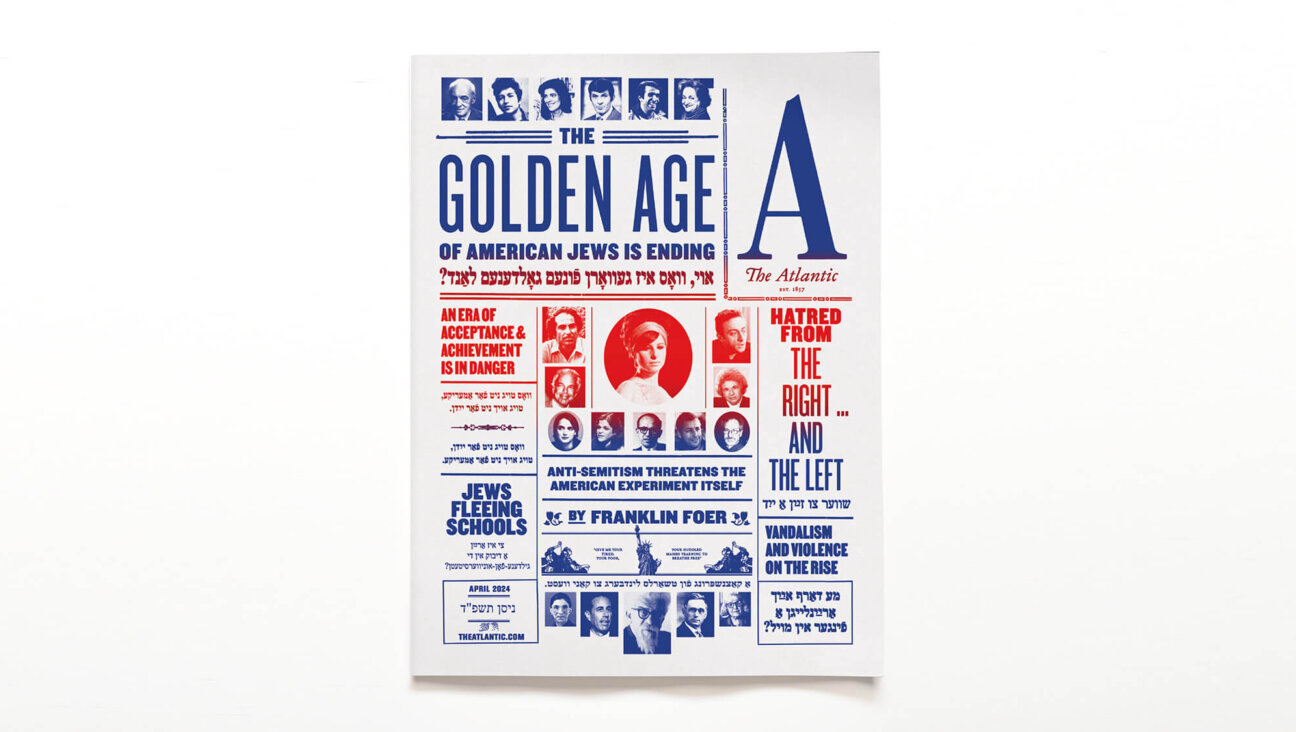How Barbra Streisand became a meme-able legend for a new generation
Sure, she has 43 Grammy nominations. But millennial and Gen Z fans might know Streisand best as the woman who cloned her dogs

Unlike many stars of her era, Barbra Streisand has managed not just to safeguard her icon status but expand her legend for the 21st century. Photo by Angelie Zaslavsky
Barbra Streisand is not God.
Still, many things that have been said about God also apply to Barbra Streisand. One can remain a stalwart monotheist and still recognize that our culture’s attitude toward Streisand echoes the words of the psalmists: “Each generation shall praise your deeds to the next, telling of your greatness, and the splendid honor of your glory.”
For six decades, Streisand has dominated Americans’ notions of talent and artistry. But each generation exalts different aspects of her greatness. When we tell of her great deeds, we talk of different things.
To older generations, Streisand is Broadway personified, a power that swung the world’s spotlight towards the stage. She is a movie star, a hit-maker and an awards show heavyweight — the definitive auteur.
By contrast, millennial and Gen Z fans have come to know Streisand in her Social Security years. We are 55 years removed from Funny Girl, and 40 from Yentl. The actress most closely associated with A Star Is Born is Lady Gaga. A lesser force of talent and personality would have faded into the background, languishing on the covers of battered parental CD cases and in misty watercolor memories of the way things were.
But unlike many stars of her era, Streisand has managed not just to safeguard her icon status but expand her legend for the 21st century. She owes that eternal relevance in part to the mythmaking abilities of women and queer people and in part to the enduring belief that — even as the chasm of wealth inequality yawns wider — the ultra-rich should oblige the rest of us by behaving outlandishly. Perhaps most importantly, the internet’s passion for singular personalities has served as yet another stage on which Streisand can thrive.
Who did it better? Barbie Streisand & Elliot Gould or Barbie & Ken? (CORRECT answers only!)? pic.twitter.com/fUue8n8LnQ
— greg.in.the.moment (@greginthemoment) August 17, 2023
So what does Streisand mean to the young and young-ish, the debt saddled, the vape-ists, those for whom “cassette” sounds like a beautiful French baby name? Yes, people born after 1980 understand that Streisand is an EGOT and 43-time Grammy nominee. We know that she is an icon of Jewish glamor and comedic genius. But to younger generations, she might be just as notable for cloning her dog.
Yes, that’s right — when her beloved dog Samantha died, Streisand preserved a sample of the dog’s DNA and produced two exact copies through a Texan pet cloning company. In 2018, while other celebrities made bids to stay relevant with stints on “Dancing with the Stars,” she penned an op-ed for The New York Times with the headline “Barbra Streisand Explains: Why I Cloned My Dog.” (The explanation was simple: “A friend had cloned his beloved dog, and I was very impressed with that dog.”) “Holy Shit, Barbra Streisand Cloned Her Dog,” announced AV Club. A BuzzFeed article revealed that the clones occasionally pay tribute to Samantha during “touching graveyard ceremonies,” popularizing an image of the cloned dogs crouched soberly upon their progenitor’s headstone. TMZ quickly picked up the storyline. Jimmy Kimmel worked a cloning joke into his Oscars monologue.
Streisand was in on the joke, telling a Variety photographer that a photoshoot with the dogs should be captioned “Send in the clones.” Not so, with perhaps her most infamous internet-era incident: She unintentionally ensured her own immortality by giving her name to the “Streisand Effect”: the phenomenon in which an attempt to divert attention from an issue backfires, triggering an unwanted onslaught of attention. In 2003, Streisand sued a photographer for releasing — in a batch of 12,000 photos of the California coastline — an image that included an aerial view of her mansion. Prior to the lawsuit, the image had been downloaded four times. Afterwards, the story was picked up by most major publications, the image was reproduced across the digital infinity, and the Encyclopædia Britannica devoted an entire entry to the effect. “I love Barbra Streisand lol” Elon Musk tweeted recently, apparently referencing the Streisand effect.
Wealthy beyond belief, as the aforementioned mansion indicates, Streisand doesn’t inspire the same ire as other ostentatiously rich celebrities — probably because she spends her money with the flair of a performer and the maniacally specific vision of a director. Younger fans continue to rediscover My Passion for Design, the 2010 coffee table tome that details, with stupefying specificity, Streisand’s King Herod-esque journey to perfect her Malibu home and several outbuildings.
7) her previous book My Passion for Design and its photography in particular pic.twitter.com/WatwhPrbtV
— Tyler Ruggeri (@t_ruggeri) February 8, 2023
In Curbed, Rachel Handler praised the book as “a true manifesto written in her sublime voice, “about the uniquely American optimism that if you never stop buying things, you can cheat death.” On the podcast Celebrity Book Club, comedian Lily Marotta marveled that Streisand “spent millions and millions of dollars” to create a compound that more or less resembles a “colonial pilgrim theme park.” If the discontented youth ever follow through on the plan to “eat the rich,” they will spare Streisand, and maybe stop in for a night at her “Cape Cod cottage-style guest house.” She has disposed of her wealth in ways that are too spectacular to loathe.
As a millennial Jewish woman, I know Streisand best in profile — aquiline nose, impressive forehead, majestic beehive crowning her head. Paradigm shifting when she emerged as a star, Streisand’s singular beauty is still a bulwark against the enduring WASP-y beauty standards. Her status as patron saint of Jewish ingenues even surfaced on Glee, in which the bossy and Semitic-looking protagonist, Rachel, positions herself as a kind of Streisand inheritor. “If you get a nose job, then you will be spitting on her legacy,” another character informs Rachel, referring to Streisand.
As 81-year-old Streisand cements her legacy in print, young women and queer people continue to treat her like an aspirational pin-up. Streisand is the subject of a black-and-white photo, snapped in the Beverly Hills Hotel Pool and endlessly reproduced on Instagram and Twitter, in which she perches on the shoulders of Elliot Gould, her erstwhile husband, and affectionately smushes her fingers into his face. This single image seems to promise that true happiness is possible for loud Jewish women who have been called obnoxious. The enduring power of the image is such that it has entered the goyish mainstream — it was referenced in publicity posters for the Barbie movie.
barbra streisand & elliot gould being adorable on their honeymoon, 1963. pic.twitter.com/X7lzyPRRGk
— ana (@pelicinema) January 27, 2023
“Every day, nay, every moment, we see Him differently,” wrote Rabbi Aidan Steinsaltz. He was talking about God, but diva worshipers can also relate to his words. Streisand’s name conjures her rapture-inducing performance in Hello Dolly! — and the shuddering beat of the dance track “Barbra Streisand” by the DJ group Duck Sauce, which shook the international club scene in the 2010s. A relisten to Lea Michele’s “Don’t Rain on My Parade” may lead to a listen to Streisand’s “Don’t Rain on My Parade,” and then to an interview the 20-year-old Streisand did with The New Yorker in 1962 in which she mused, “I love food. I look forward to it all day. My body responds to it.”
As the critic S. Brook Corfman wrote of Yentl, “Nothing truly profound can be exhausted by your attention.” So it is, with us and Streisand.
L’dor v’dor, darling!





















